A neutral particle is at rest in a uniform magnetic field →B.At t=0,particle decays into two particles each of mass m and one of them having charge q Both of these move off in separate paths lying in plane perpendicular to →B.A later time,the particles collide.Find this time of collision neglecting the interaction force.
1.87×10−9s
Topper's Solved these Questions
- MAGNETIC FORCEBOOK - RESNICK AND HALLIDAYCHAPTER - MAGNETIC FORCEEXERCISE - Practice Questions (Single correct Choice Type )
24 Videos
- MAGNETIC FORCEBOOK - RESNICK AND HALLIDAYCHAPTER - MAGNETIC FORCEEXERCISE - Practice Questions (More than one correct choice Type)
11 Videos
- MAGNETIC FORCEBOOK - RESNICK AND HALLIDAYCHAPTER - MAGNETIC FORCEEXERCISE - Check point
6 Videos
- MAGNETIC FIELDS DUE TO CURRENTSBOOK - RESNICK AND HALLIDAYCHAPTER - MAGNETIC FIELDS DUE TO CURRENTSEXERCISE - Practice Question (Integer Type)
4 Videos
- MOTION ALONG A STRAIGHT LINEBOOK - RESNICK AND HALLIDAYCHAPTER - MOTION ALONG A STRAIGHT LINEEXERCISE - PRACTICE QUESTIONS ( Integer Type )
3 Videos
Similar Questions
A neutral particle is at rest in a uniform magnetic field B. At time t=0 it decays into two charged particles, each of mass m.
(a) If the charge of one of the particles is +q, what is the charge of the other?
(b) The two particles move off in separate paths, both of them lie in the plane perpendicular to B. At a later time, the particles collide. Express the time from decay until collision in terms of m,B and q.
View SolutionA charged particle having charge q is moving in a uniform magnetic field B parallel to the lines of field force, the magnetic force acting on a charge will be qvB
View Solution
Knowledge Check
A charged particle moves with velocity →v in a uniform magnetic field →B. The magnetic force experienced by the particle is
AAlways zeroBNever zeroCZero, if →B and →v are perpendicularDZero, if →B and →vare parallelA charged particle moves with a velocity →v in a uniform magnetic field →B. The magnetic force experienced by the particle is
Aalways zeroBzero if →v and →B are perpendicularCnever zeroDzero if →v and →B are parallel or antiparallel.A neutral particle at rest in a magnetic field decays into two charged particles of different mass. The energy released goes into their kinetic energy. Then what can be the path of the particles. Neglect any interaction between the two charges.
A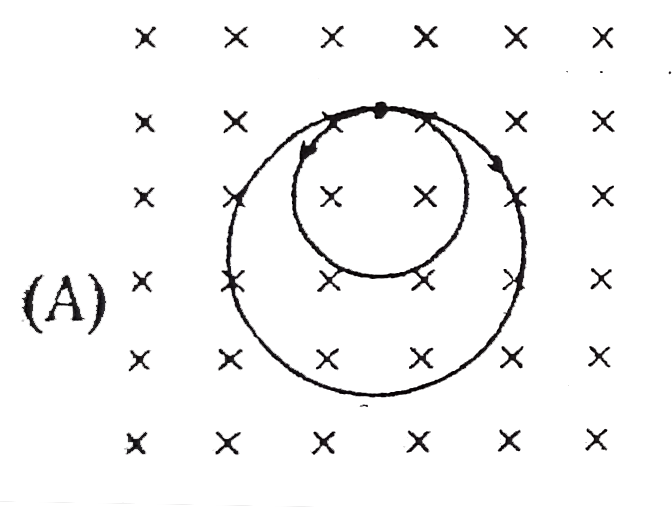 B
B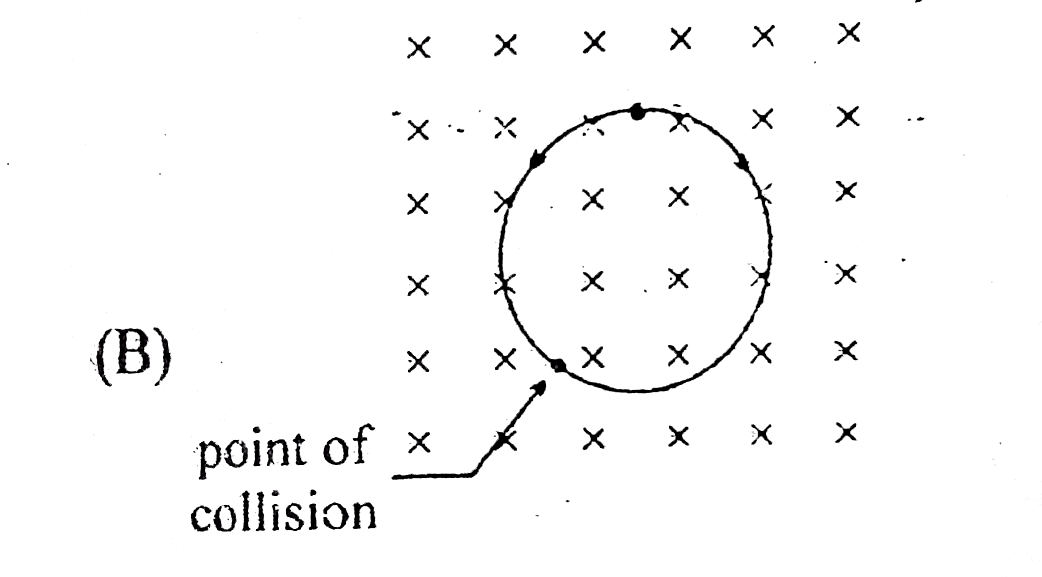 C
C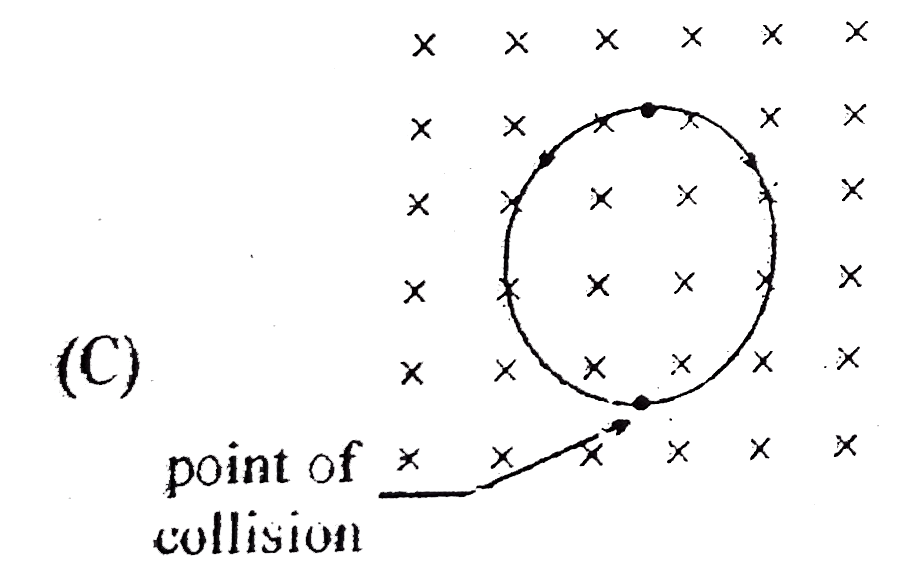 D
D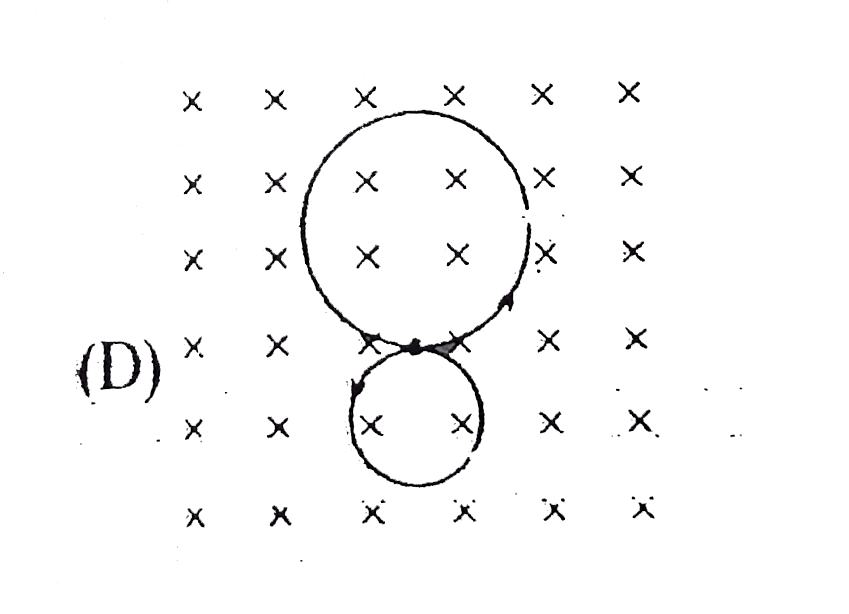
A particle of mass m1, hits another particle in rest of mass m2, obliquely, If both the particles after elastic collision moves perpendicular to each other then m1m2 is
View SolutionIf a charged particle is a plane perpendicular to a uniform magnetic field with a time period T Then
View SolutionA neutral particle is initally at rest in a uniform magnetic field B as shown in the diagram. The particle then spontaneously decays into two fragments, one with a positive charge +q and mass 3m and the other with negative charge −q and mass m. Neglecting the interaction between the two charged particles and assuming that the speeds are much less than speed of light, determine the time (in μs) after the decay at which the two fragments first meet. (use the following data q=1μCB=2πμT,m=10−15kg). Both the charges have initial velocity in x−y plane.
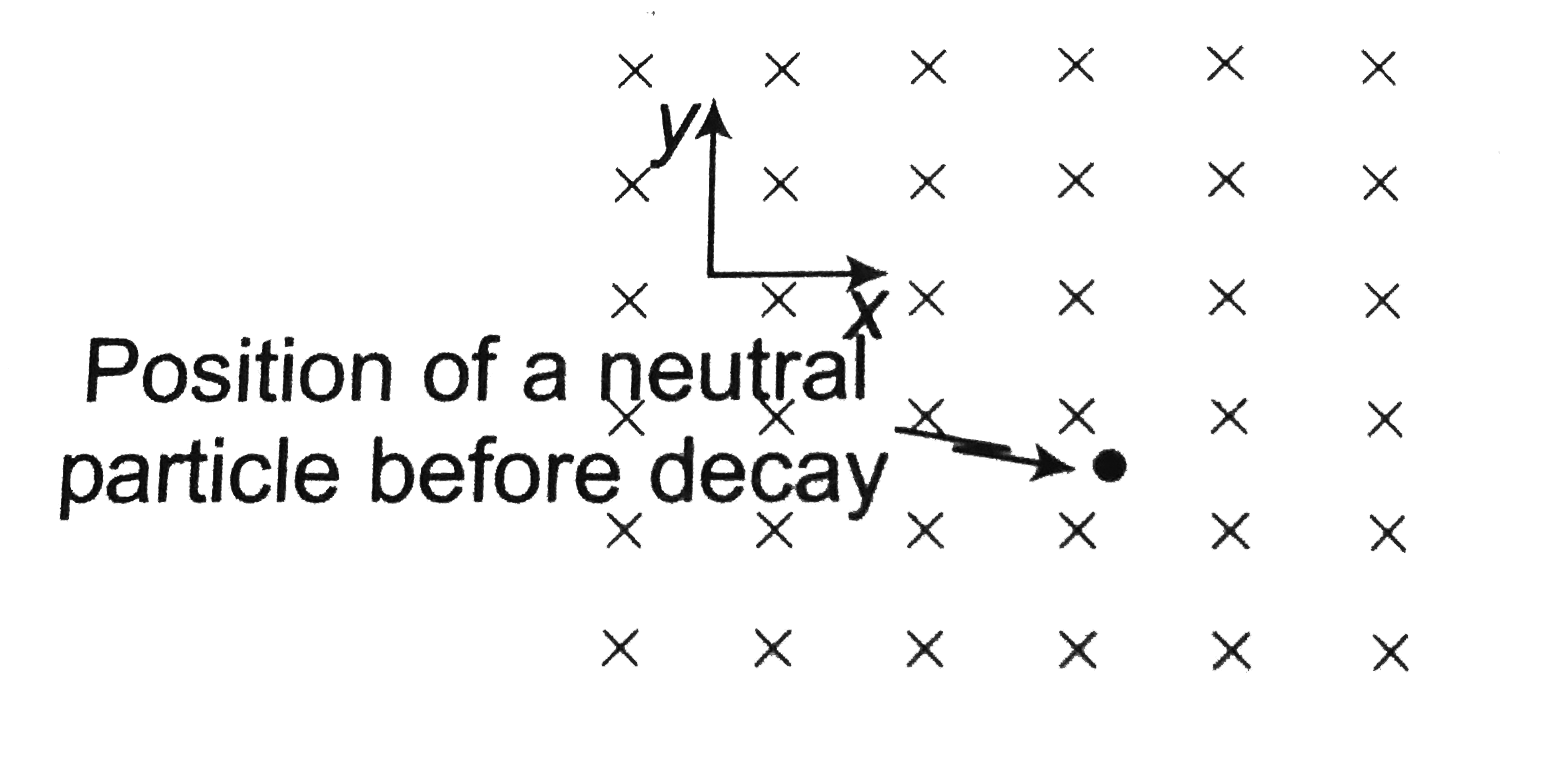
View SolutionA charged particle of mass m and charge q travels on a circular path of radius r that is perpendicular to a magnetic field B. The time takeen by the particle to complete one revolution is
View SolutionA particle having charge q enters a region of uniform magnetic field →B (directed inwards) and is deflected a distance x after travelling a distance y. The magnitude of the momentum of the particle is
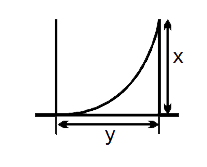
View Solution
